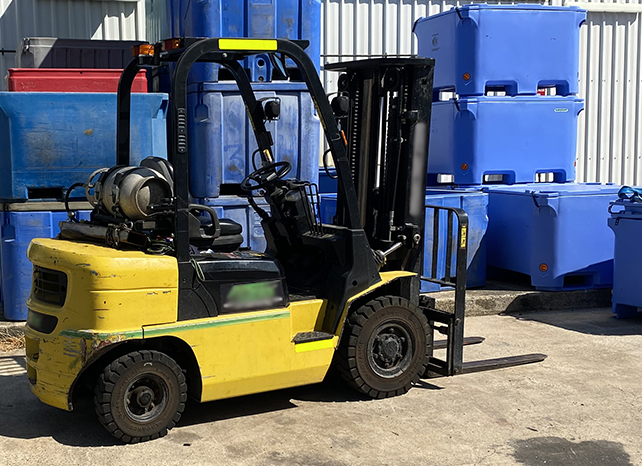Carbon monoxide risk when using forklifts in enclosed areas
The purpose of this Safety Alert is to highlight the risk of carbon monoxide exposure when using fuel-powered (petrol/LPG/Diesel) forklifts in an enclosed or poorly ventilated area. This alert also applies to all fuel-powered equipment and tools such as generators, blowers and pressure cleaners etc.
Background
Two workers working in a cool room experienced the effects of carbon monoxide poisoning that resulted in one of the workers requiring medical assistance. An LPG fuelled forklift had been operating inside the cool room the workers were in.
Carbon monoxide is an airborne contaminant emitted by operating fuel-powered engines or motors and is hard to detect because it is odourless, tasteless and invisible. Carbon monoxide blocks the body's ability to absorb oxygen if inhaled. The symptoms of carbon monoxide exposure includes:
- Headache
- Feeling very tired
- Nausea
- Confusion
- Dizziness.
Possible contributing factors
- Fuel-powered forklifts emit carbon monoxide when they operate.
- The cool room was an enclosed space with limited ventilation.
- The workers had been working in the cool room for a few hours.
Action required
There is a requirement under the work health and safety laws to limit a worker’s exposure to carbon monoxide. The workplace exposure standard for carbon monoxide is 30 ppm averaged over eight hours.
- Avoid using fuel-powered forklifts and other equipment in enclosed or poorly ventilated areas, instead use pallet jacks or electric powered forklifts.
- If using manual equipment or an electric forklift is not possible:
- Conduct a risk assessment, including engaging a competent person such as an occupational hygienist to conduct an assessment and if required air monitoring
- Install carbon monoxide alarms in the enclosed space
- If the assessment indicates ventilation is poor within your work area, use portable ventilation equipment under direction from a competent person to improve the ventilation
- Develop policies and procedures for using fuel-powered forklifts in enclosed or poorly ventilated area, including an emergency response procedure
- Ensure your forklift is regularly maintained and the vehicle exhaust system is regularly inspected for leaks.
- Consult with your workers and provide information on the risk of carbon monoxide exposure, including:
- Possible symptoms of exposure
- Emergency response procedures
- Internal procedures to report an incident.
Further information
For further information, please refer to the following:
Code of Practice
- Managing the work environment and facilities - 2.7 Ventilation
- Managing risks of hazardous chemicals in the workplace
Guidance publications
- Carbon monoxide technical fact sheet (SafeWork NSW)
- Workplace Exposure Standards for Airborne Contaminants (Safe Work Australia)
Disclaimer
This Safety Alert contains safety information following inquires made by NT WorkSafe about an incident or unsafe practice. The information contained in this Alert does not necessarily include the outcome of NT WorkSafe’s action with respect to an incident. NT WorkSafe does not warrant the information in this Alert is complete or up-to-date and does not accept any liability for the information in this report or as to its use.
